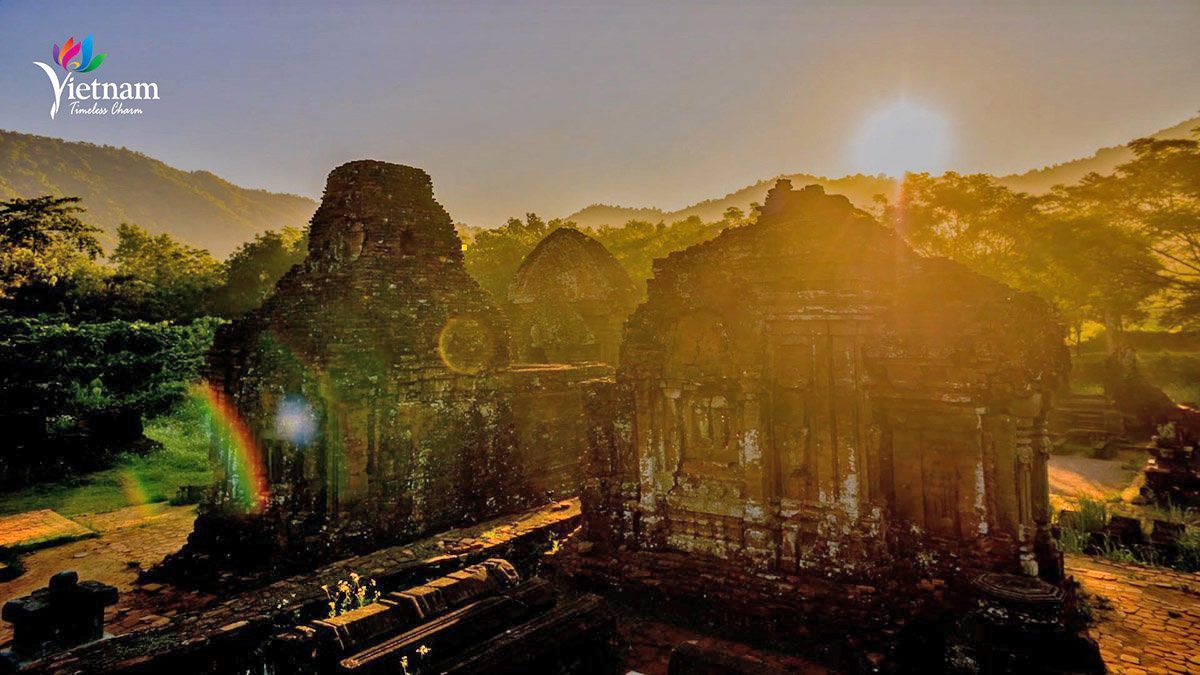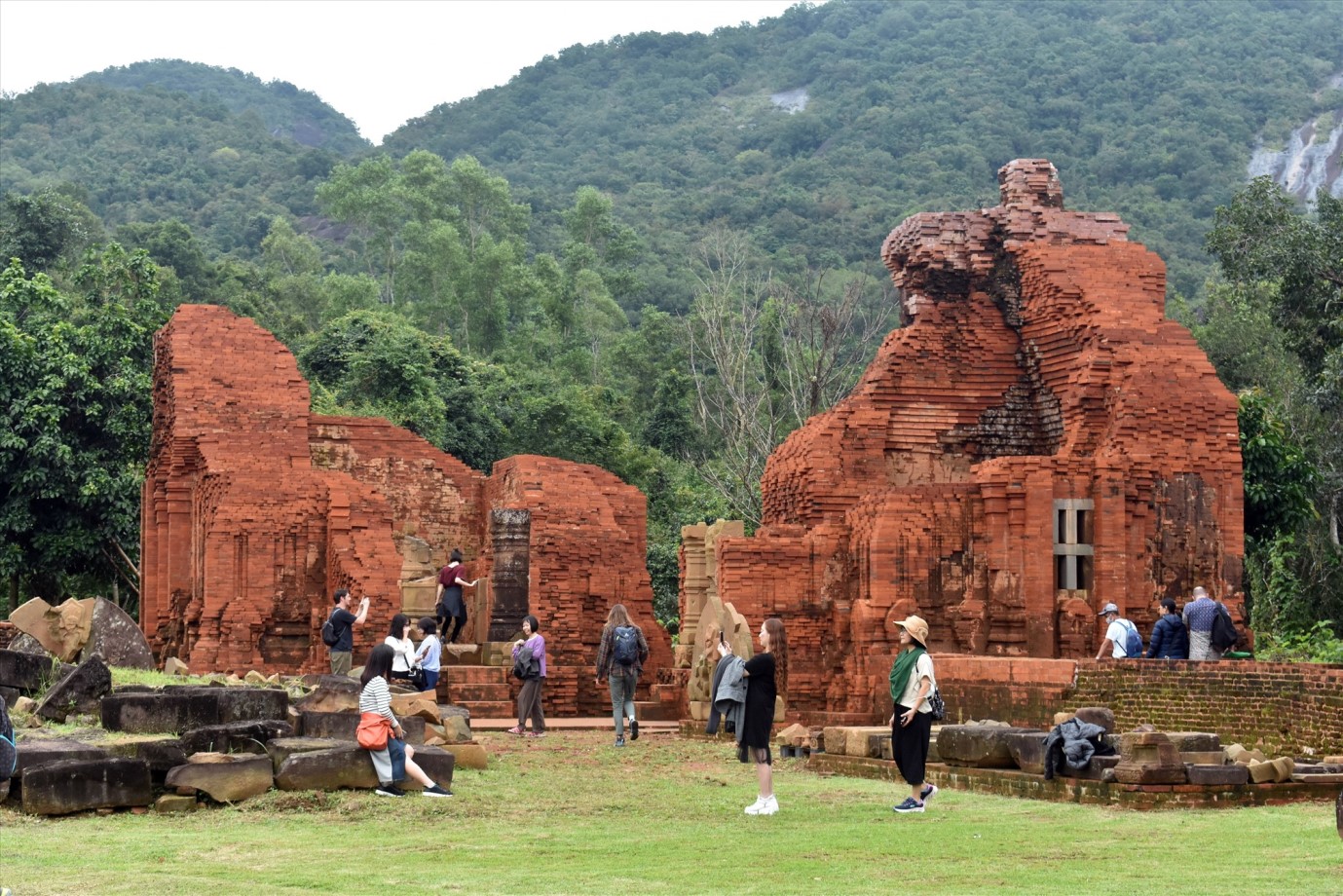(TITC) - Holding a deep historical meaning and value, My Son Sanctuary - Quang Nam Province lies in a remarkable position in the art and culture of Southeast Asia. In view of the outstanding global values of a cultural heritage that must be protected for the benefit of all mankind, on 4th December 1999, this relic was approved by the United Nations Commission on Culture, Science and Education (UNESCO) recognized as world cultural heritage.
My Son Sanctuary belongs to the area of Duy Phu Commune, Duy Xuyen District, Quang Nam Province, about 70 km southwest of Da Nang City. The complex monument is located in a remote valley with majestic mountainous terrain, constructed in the fourth century by King Bhadravarman (reigning from 349 to 361) and completed at the end of 13th century, early 14th century under the reign of King Jaya Simhavarman III.
 Magnificent, profound, majestic My Son (Photo: Screenshot from Live fully in Vietnam clip)
Magnificent, profound, majestic My Son (Photo: Screenshot from Live fully in Vietnam clip)
Here, 70 temples and towers embracing the historical, cultural, architectural and artistic values of the Champa civilization, which are evaluated on par with famous monuments in Southeast Asia such as: Borobudur (Indonesia), Pagan (Myanmar), Angkor Wat (Cambodia). It is conceived of the values of history, culture, architecture and art that were created during 9 centuries (from the 4th to the 13th century). Despite being damaged badly by time and war, what remains in My Son plays an extremely important role in the world heritage of history, culture, architecture and art.
Through ups and downs with the history of construction and continuous development over many centuries, the temples and towers show a variety of architectural styles, but in general, they are all in a high position symbolising the greatness and purity of Mount Mera, the residence of the gods and the centre of the universe. The relics of the My Son temple complex are the most important works of the Champa culture. Most of the buildings are constructed of fired bricks with stone pillars and decorated with sandstone reliefs showing Indian anecdotes.
Among the architectural forms of Cham towers, the architecture of the My Son Sanctuary complex is unique and rare. The tower-temples are arranged in groups, from two or more towers. There are walls, yards, paths connecting the towers. Each tower has its own function. Gather in groups, with the main shrine in the middle, each group is surrounded by thick brick walls. The main door of the main tower mostly faces the East (towards the gods). Some of the main towers have additional doors to the west. In front of the main temple (Kalan) is a gate tower (Gopura) with a small structure of two interconnected doors: one door to the East, one door to the main temple, next to the gate tower is usually a longhouse (Mandapa). It has a tiled roof, a spacious interior, which is a place to welcome pilgrims and receive gifts as well as perform dances in the sacrifice ceremony to the gods.

Group of towers A (Photo: Quangnamnews)
Built from the 4th century to the middle of the 13th century, the temples in My Son were the official architectural works of the country and were built by the reigning kings, so it can be said that the temples were the place where the most typical and quintessential example unique art architecture at that time. Most of the architectural styles of Cham temples are present in My Son and the temples in My Son themselves create the basic criteria for identifying Cham architectural styles.
By time, through communication with other civilizations and the selective reception of Champa artists, the temples at My Son have architectural lines in different periods, showing the cultural flows they had received. As the main temple ensemble of the kingdom during nine centuries, the temples of My Son also show the ups and downs of the periods, the changes in the history of the dynasties, the changes in cultural life.
Not as grandiose as other Champa complexes and monuments, My Son has an important place in the Southeast Asian art scene because it is the only relic of the whole region with a continuous development period of nearly 9 centuries, the architecture of My Son has distilled the quintessence of the artist, the combination of architectural techniques and decorative arts of the ancient Champa people, creating a majestic and mysterious look for the temples and towers.
Tourism Information Technology Center
















